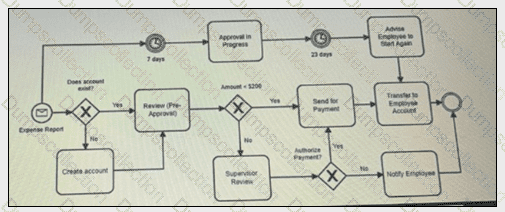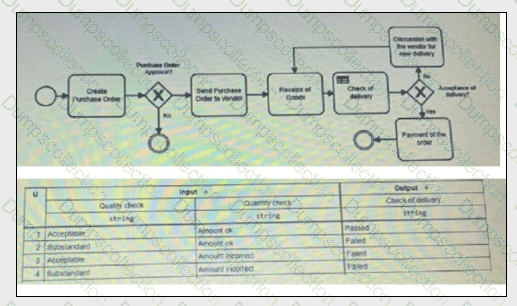iSQI ISTQB Certified Tester - Acceptance Testing (CT-AcT) CTFL-AcT Exam Dumps: Updated Questions & Answers (December 2025)
As a part of a travel expense reimbursement management system, the following business process is defined:
• After receipt of the expense report, a new account must be created if the employee does not already have one. The report is then reviewed.
• Amounts less than $200 are automatically approved, while amounts equal to or greater than $200 must be approved by the supervisor. If the request is rejected, the employee is informed. The employee is reimbursed by payment to his of her bank account.
• If the request is not processed within 7 days, the employee receives an "ongoing" e-mail. If the request is not completed within 30 days, then the process is stopped, and the employee receives a cancellation e-mail asking her/him to resubmit the refund request
The following BPMN model has been submitted for review
Which of the following comments is MOST Likely to have been made on this BPMN model?

Consider the following BPMN model and the related DMN model describing the decision rules associated to the "Check of delivery" activity
What is the minimum number of test cases required to cover all paths without repeated loops in the BPMN model AND all decisions in the DMN table?

The standard ISO 25010 defines a quality in use model with characteristics and subcharacteristics. Which elements of the following list is a characteristic of quality in use according to this standard?
Which one of the following statements BEST explains how the quality of requirements / user stories and acceptance criteria affects acceptance testing?
Which of the following statements about test approaches and test techniques for acceptance testing is MOST correct?
Which one of the following arguments is the BEST reason to add additional information to BPMN diagrams?
Which one of the following statements describes an exploratory test charter BEST?
Which of the following statements regarding test execution and defect analysis is MOST correct?
A green courier working for an urban delivery service company uses three types of vehicles: normal bicycles, electric cargo bikes and electric vans. The following DMN table provides the rules used to select the type of zero emission vehicle to be used according to the weight (in kg) and the largest dimension (in cm) of the parcel, and the delivery distance (in km)
Which one of the following statements is consistent with this DMN table?

During acceptance test execution, testers and business analysts closely work together during test execution. Of the following statements, which two statements are MOST likely?

